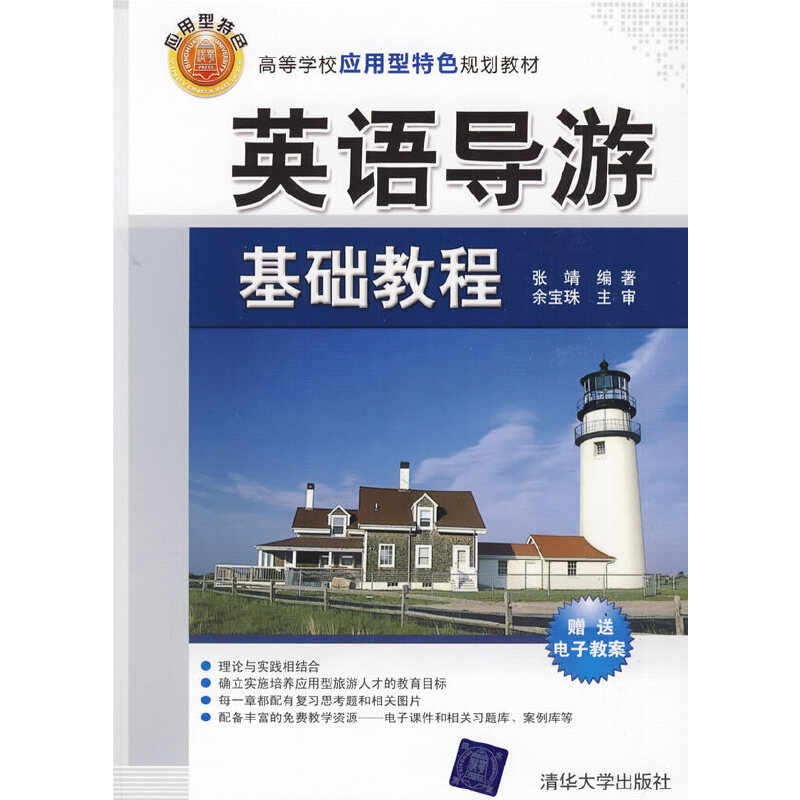新编实用英语语法教程
¥35.00定价
作者: 谢徐萍
出版时间:2016年9月
出版社:苏州大学出版社
获奖信息:全国高等教育英语规划教材
- 苏州大学出版社
- 9787567217652
- 120177
- 2016年9月
- 未分类
- 未分类
- H314
内容简介
由谢徐萍教授主编的《新编实用英语语法教程》继承了传统语法的优点,吸收了现代语法的最新成果,是一部难得的好书。本书特点如下:
(1)内容新。本书吸收了国内外相关领域的最新研究成果,这使得本书的内容新、观点新,而不赶时髦。启发性、研究性、任务型教学理念贯穿本书始终,以设问开头,突出每章内容重点。每个问题都能够帮助学生迅速抓住章节主要的知识点,以吸引学生的注意力、提高他们的学习兴趣。
(2)结构合理。本书没有繁琐的条目,结构安排合理科学。根据语法难易程度,层层递进,知识点由浅入深,可以让学生更好地理解和吸收英语语法的精髓。
(3)课堂活动设计合理。融枯燥的英语语法规则于形式多样的任务之中,教材中所涉及的术语、知识点和生词都在课文旁列出,用黑体加粗重要名词,提高教材的可读性和流畅性;运用表格来区分语法盲点,使人一目了然,有助于学生学习语法、词汇的英文表达,继而提高他们的英语表达能力。
总之,本教材带给学生的将不仅仅是英语语法知识,更有全新的英语语法学习体验,是一本值得学习和研究的好教材。
(1)内容新。本书吸收了国内外相关领域的最新研究成果,这使得本书的内容新、观点新,而不赶时髦。启发性、研究性、任务型教学理念贯穿本书始终,以设问开头,突出每章内容重点。每个问题都能够帮助学生迅速抓住章节主要的知识点,以吸引学生的注意力、提高他们的学习兴趣。
(2)结构合理。本书没有繁琐的条目,结构安排合理科学。根据语法难易程度,层层递进,知识点由浅入深,可以让学生更好地理解和吸收英语语法的精髓。
(3)课堂活动设计合理。融枯燥的英语语法规则于形式多样的任务之中,教材中所涉及的术语、知识点和生词都在课文旁列出,用黑体加粗重要名词,提高教材的可读性和流畅性;运用表格来区分语法盲点,使人一目了然,有助于学生学习语法、词汇的英文表达,继而提高他们的英语表达能力。
总之,本教材带给学生的将不仅仅是英语语法知识,更有全新的英语语法学习体验,是一本值得学习和研究的好教材。
目录
1. Introduction: Grammatical Hierarchy
1.1 Morphemes
1.2 Words
1.3 Phrases
1.4 Clauses
1.5 Sentences
Part One The Structure of English Sentences
2. Sentence Components
2.1 Subject and Predicate 16
2.2 Object
2.3 Complements
2.4 Attribute
2.5 Adverbial
2.6 Appositive
2.7 Independent Element
3. Subject-verb Concord
3.1 Person and Number Forms
3.2 Three Guiding Principles
3.3 Concord with Nouns Ending in -s
3.4 Concord with Collective Nouns as Subject
3.5 Concord with Coordinate Subjectg
3.6 Concord with Expressions of Quantity as Subject
3.7 Other Problems of Subject-verb Concord
4. Sentence Constructions and Analysis
4.1 Sentence Patterns
4.2 Sentence Transformation and Expansion
4.3 Coordinate Constructions
4.4 Subordinate Constructions
4.5 Existential Sentences
5. Uses of Sentences
5.1 Declarative Sentences
5.2 Interrogative Sentences
5.3 Imperative Sentences
5.4 Exclamatory Sentences
Part Two Predicate and Related Grammatical Categories
6. Tense and Aspect Systems
6.1 The Tense of Predicate
6.2 The Aspect of Predicate
6.3 Present Tense
6.4 Past Tense
6.5 Future Time
7. Voice System
7.1 Active Sentence and Passive Sentence
7.2 Transformation of Active Voice into Passive Voice
7.3 Constraints on Transformation
7.4 Voice of Phrasal Verbs
7.5 Uses of Passive Voice
7.6 Passivity--Form and Meaning
8. Mood System
8.1 Types of Mood lll
8.2 Be-subjunctive 112
8.3 Were-subjunctive
8.4 Other Forms Expressing Hypothetical Meanings 116
Part Three Parts of Speechs
9. Nouns
9.1 Classification of Nouns
9.2 Function of Noun Phrases
9.3 Number Forms of Nouns
9.4 Genitive Nouns 135
10. Determiners
10.1 Types of Determiners
10.2 Collocations between Determiners and Nouns
10.3 Collocations between Determiners
11. Verbs
11.1 Classification of Verbs (Ⅰ)
11.2 Classification of Verbs (Ⅱ)
11.3 Infinitive ]60
11.4 Participles 164
11.5 Notes about Infinitive and -ing Participle
12. Adjectives and Adverbs
12.1 Classification of Adjectives
12.2 Chief Uses of Adjectives and Adjective Phrases
12.3 Classification of Adverbs
12.4 Chief Uses of Adverbs and Adverb Phrases
12.5 Two Forms of Adverbs
12.6 Comparison and Comparative Constructions
13. Prepositions
13.1 Types of Prepositions
13.2 Collocation of Prepositions
13.3 Roles of Prepositional Phrases in Sentences
13.4 Transformation between Prepositional Phrases and Subordinate Clauses
Part Four Grammar and Text
14. Inversion
14.1 Definition of Inversion
14.2 Grammatical Inversion
14.3 Rhetorical Inversion
15. Ellipsis and Substitution
15.1 Definition of Ellipsis and Substitution
15.2 Grammatical Ellipsis
15.3 Rhetorical Ellipsis
15.4 Substitution
16. Cohesion in English Text
16.1 Definition of Cohesion
16.2 Types of Cohesive Devices
16.3 Choice of Cohesive Devices
Appendix 1 Solutions to Tasks
Appendix 2 Glossary
References
1.1 Morphemes
1.2 Words
1.3 Phrases
1.4 Clauses
1.5 Sentences
Part One The Structure of English Sentences
2. Sentence Components
2.1 Subject and Predicate 16
2.2 Object
2.3 Complements
2.4 Attribute
2.5 Adverbial
2.6 Appositive
2.7 Independent Element
3. Subject-verb Concord
3.1 Person and Number Forms
3.2 Three Guiding Principles
3.3 Concord with Nouns Ending in -s
3.4 Concord with Collective Nouns as Subject
3.5 Concord with Coordinate Subjectg
3.6 Concord with Expressions of Quantity as Subject
3.7 Other Problems of Subject-verb Concord
4. Sentence Constructions and Analysis
4.1 Sentence Patterns
4.2 Sentence Transformation and Expansion
4.3 Coordinate Constructions
4.4 Subordinate Constructions
4.5 Existential Sentences
5. Uses of Sentences
5.1 Declarative Sentences
5.2 Interrogative Sentences
5.3 Imperative Sentences
5.4 Exclamatory Sentences
Part Two Predicate and Related Grammatical Categories
6. Tense and Aspect Systems
6.1 The Tense of Predicate
6.2 The Aspect of Predicate
6.3 Present Tense
6.4 Past Tense
6.5 Future Time
7. Voice System
7.1 Active Sentence and Passive Sentence
7.2 Transformation of Active Voice into Passive Voice
7.3 Constraints on Transformation
7.4 Voice of Phrasal Verbs
7.5 Uses of Passive Voice
7.6 Passivity--Form and Meaning
8. Mood System
8.1 Types of Mood lll
8.2 Be-subjunctive 112
8.3 Were-subjunctive
8.4 Other Forms Expressing Hypothetical Meanings 116
Part Three Parts of Speechs
9. Nouns
9.1 Classification of Nouns
9.2 Function of Noun Phrases
9.3 Number Forms of Nouns
9.4 Genitive Nouns 135
10. Determiners
10.1 Types of Determiners
10.2 Collocations between Determiners and Nouns
10.3 Collocations between Determiners
11. Verbs
11.1 Classification of Verbs (Ⅰ)
11.2 Classification of Verbs (Ⅱ)
11.3 Infinitive ]60
11.4 Participles 164
11.5 Notes about Infinitive and -ing Participle
12. Adjectives and Adverbs
12.1 Classification of Adjectives
12.2 Chief Uses of Adjectives and Adjective Phrases
12.3 Classification of Adverbs
12.4 Chief Uses of Adverbs and Adverb Phrases
12.5 Two Forms of Adverbs
12.6 Comparison and Comparative Constructions
13. Prepositions
13.1 Types of Prepositions
13.2 Collocation of Prepositions
13.3 Roles of Prepositional Phrases in Sentences
13.4 Transformation between Prepositional Phrases and Subordinate Clauses
Part Four Grammar and Text
14. Inversion
14.1 Definition of Inversion
14.2 Grammatical Inversion
14.3 Rhetorical Inversion
15. Ellipsis and Substitution
15.1 Definition of Ellipsis and Substitution
15.2 Grammatical Ellipsis
15.3 Rhetorical Ellipsis
15.4 Substitution
16. Cohesion in English Text
16.1 Definition of Cohesion
16.2 Types of Cohesive Devices
16.3 Choice of Cohesive Devices
Appendix 1 Solutions to Tasks
Appendix 2 Glossary
References



